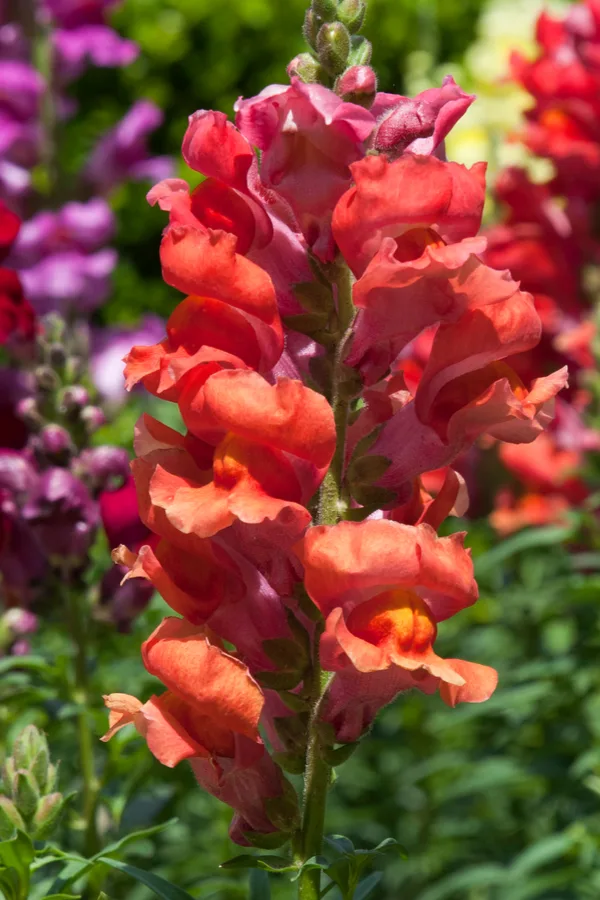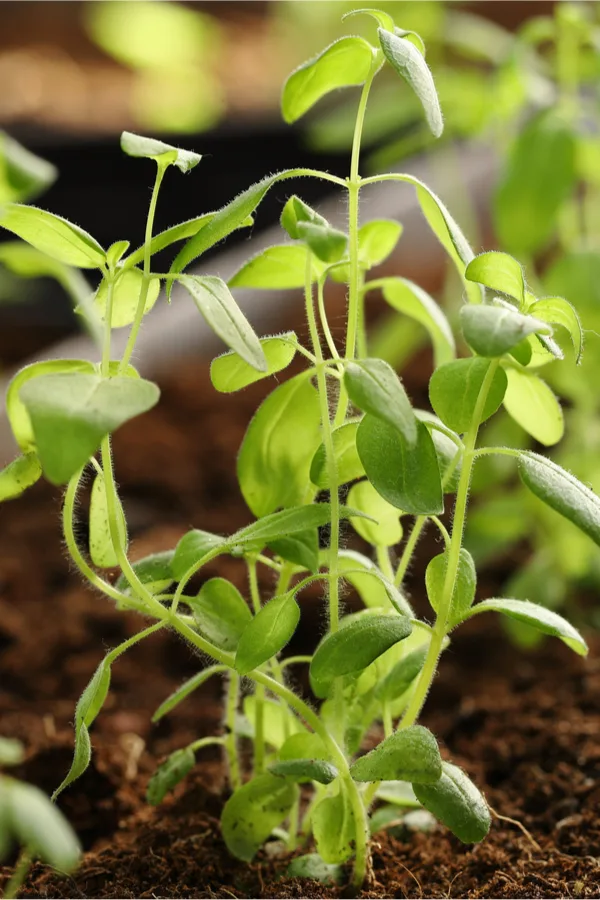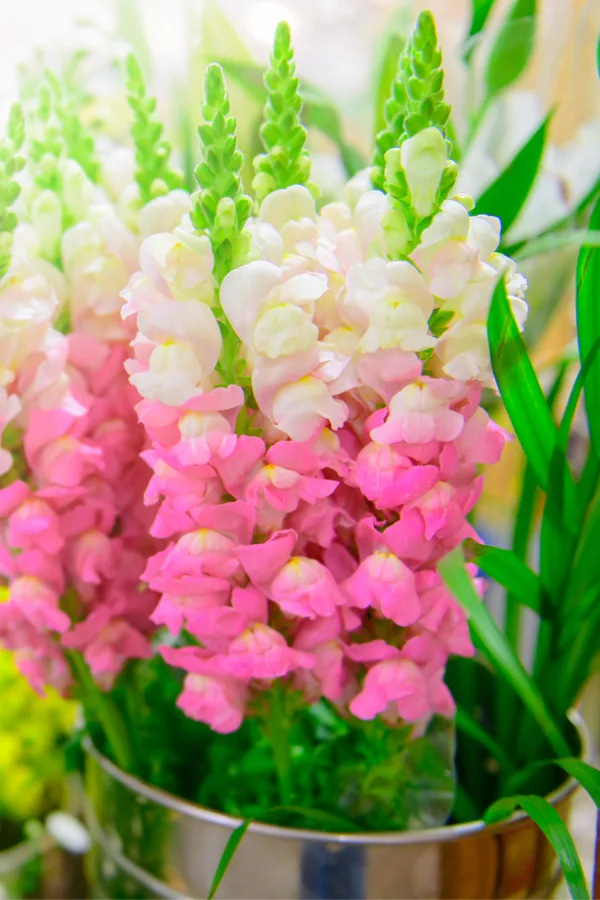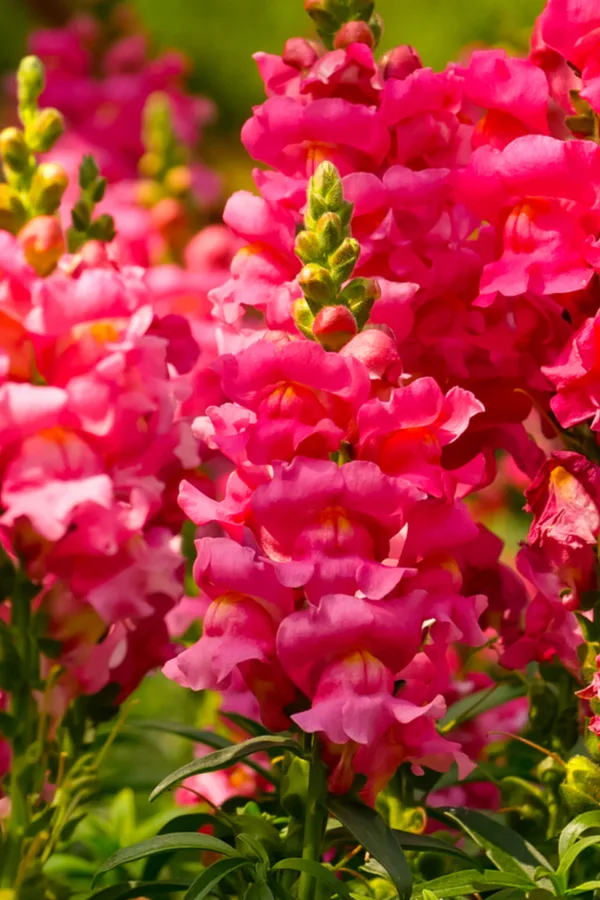Nothing will add more color and pizazz to your flowerbeds and containers than planting snapdragons, especially when you can keep them blooming strong all summer long!
With dragon-shaped blooms that flower in a wide array of colors, snapdragons are a unique plant for sure. Although technically an herbaceous perennial, snapdragons grow as an annual in most climates without mild winters.
Not only are their hinged blooms spectacular to behold, they actually need to be “opened” by pollinators to work the nectar. Because of this, the blooms often look as they are opening and closing like a dragon’s mouth as bees enter and exit.
It’s quite the sight to behold. And, also quite easy to see how this beautiful plant earned the name snapdragon.

But perhaps what really makes snapdragons such a great choice for growing is their versatility. With varieties ranging from just a few inches tall up to 36 inches or more in height, they are perfect as a bedding plant, or in containers, pots, raised beds and more.
Here is a look at how to plant and grow snapdragons, and how to keep them blooming strong from spring until fall!
Planting & Growing Snapdragons
Snapdragons can be either planted directly from seed, or as a transplant. With seed to bloom times that can up to 8 weeks to flower, many gardeners opt for planting transplants.

Snapdragon seeds can be started indoors 6 to 8 weeks prior to your last frost date. This allows plants plenty of time to develop to bring on blooms much earlier in the growing season. With their growing popularity, many nurseries and greenhouse also carry snapdragon transplants as well.
If you would like to direct seed into flowerbeds, you can sow seeds a few weeks before your projected last frost. Keep in mind with direct seeding, blooms will be a bit delayed.
Where & How To Plant
Whether planting by seed or transplant, snapdragons perform best in fertile, well-draining soil. Amend the soil or planting hole prior to planting with plenty of compost. This helps to provide the needed nutrients for a long, strong blooming season.

Although snapdragons can survive in partial shade, they will grow and bloom best in full sun. Plant in an area that receives at least 6 to 8 hours of daily direct sunlight for best results.
Snapdragon Care – How To Keep Snapdragons Blooming
Moisture is a key factor in both plant growth and bloom production. When planting seeds, keep the soil moist for the first few weeks to allow good germination and seedling growth.
When planting transplants, water frequently the first few weeks to help plants establish their roots in the soil. Once established, snapdragons require about an inch of rainfall or watering per week. Excessively long dry periods between watering will hinder bloom frequency, so early watering is important.
When growing snapdragons in containers and pots, you will need to water more frequently than in bed spaces. Check the moisture level with your finger about an inch or so down into the potting soil. If dry to the touch, it’s time to water.
Mulching & Fertilizing – How To Keep Snapdragons Blooming
A thick, three to four inch layer of mulch is a big benefit when growing snapdragons in beds. Not only does it help to keep moisture in the soil, it also suppresses weed growth.
If weeds are allowed to establish, they can steal valuable nutrients and moisture from the snapdragons. In the process, both growth and bloom sets will be greatly reduced.
Snapdragons benefit from additional fertilizing once they have established in the soil. But it’s how you apply the fertilizer that can make all the difference. A slow, steady supply of nutrients is far better than one or two large doses throughout the season.

For snapdragons in containers, apply a light application of all-purpose liquid fertilizer ever few weeks. Compost tea and worm casting tea are both great options, as they provide slow-release power to the plants. (See: 5 Great Organic Fertilizers)
Bedding plants can be fertilized monthly with compost tea, casting tea, or a good all purpose, slow release granular fertilizer. Always fertilize early in the day to avoid burning plants during the heat of the day.
How To Keep Your Snapdragons Blooming From Spring Til Fall
Snapdragons tend to bloom stronger in the spring and fall in the cooler temperatures. In the heat of the summer, many plants will slow their blooms a bit to help combat the heat. Because of this, be sure to keep plants well-watered to keep them healthy through the heat for a strong fall bloom set.

To keep plants blooming at their fullest potential, deadhead spent blooms as soon as they begin to fade. This will keep the plant producing new bloom shoots all season long.
Snapdragons blooms appear on long stems, and unfurl from the bottom to the top. When the final set of top blooms begin to flower, that is the time to cut the flower stem back to force new bloom cycles.
Snapdragons actually handle cool temperatures well, and with good care, will last deep into fall. Although they do grow as an annual in most locations with cooler winters, they are a prolific re-seeder. Keep an eye out next spring in your beds, and you may just find you have quite a few volunteer plants coming back!
Here is to growing snapdragons in your landscape, and to keeping them blooming all season long.

Follow Our Facebook Page For Great Gardening Tips And Advice! This Is My Garden Facebook Page
This Is My Garden is a garden website created by gardeners, for gardeners. Jim and Mary Competti have been writing gardening, DIY and recipe articles and books and speaking for over 15 years from their 46 acre Ohio farm. They publish three articles every week, 52 weeks a year. Sign up today to follow via email, or follow along!
